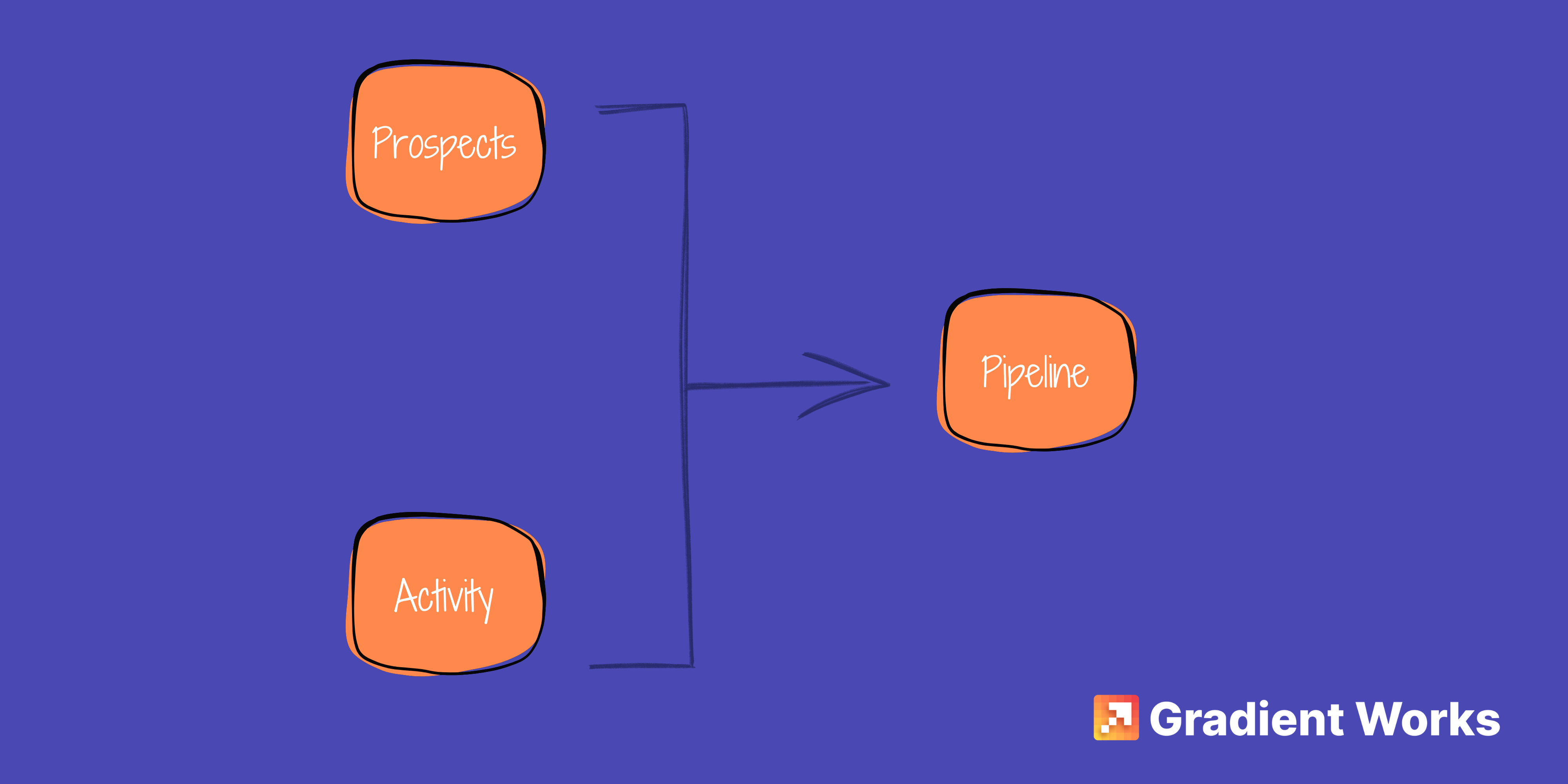Let’s be real—sales managers don’t get to coast. Every quarter is a reset. Q2 is here, the scoreboard’s wiped, and you’ve got to get your team tuned up and executing fast.
So, how do you go from “hustling to hit” to actually building something sustainable?
Here’s the move: Treat Q2 like a systems check. Clean up the mess from Q1, re-center your team, and get laser-focused on execution. I pulled insights from some smart friends (Ryan Burke from Zilla Security and Steve Travaglini, formerly of LinkSquares) and added lessons from teams using Gradient Works. Here’s the breakdown—with implementation tactics and ideas you can bring straight to your next team meeting.
1. Kick things off with a no-BS debrief
Your Q1 results are trying to tell you something—if you’re willing to listen.
You need more than just “win/loss” insights. Run a stage-by-stage conversion breakdown. Slice it by segment, rep, vertical, and persona. Get into the nitty-gritty. Were you good at converting CFOs in Q4, but they vanished in Q1? Did inbound leads convert worse than outbound?
Tactical takeaways for your team:
- Assign each frontline manager a segment to analyze and bring findings to your Q2 kickoff.
- Use rep debriefs to surface repeated objections or blockers. If the same challenge shows up in five 1:1s, it’s real.
Pro tip: Data is your friend, but don’t ignore your gut. Use both. As Ryan Burke says, “Be data-driven, not data-dependent.”
2. Audit pipeline coverage before you're in trouble
If your Q2 plan needs every deal to close perfectly, you’re not in control—you’re crossing your fingers.
You need to know:
- How much pipeline was created in Q1 for Q2?
- How did pipeline coverage at the start of Q1 match actual outcomes?
- Do reps have the capacity (and tools) to generate enough for Q3?
Manager implementation tip:
- Run a pipeline coverage vs. attainment retro. Plot coverage at Q1 kickoff vs. quota attainment by rep. Any patterns?
- Rebalance books where needed. One team using Gradient Works slashed rep books from 3,000 to 300. Win rate? Went from 13% to 20%. Clean books = clean wins.
Reminder: Pipeline generation is not just a Q1 activity. Treat Q2 like a build-and-close hybrid. Don’t let prospecting fall off a cliff.
3. Don't lie to yourself-or let your reps do it
High-performers call it like it is. If you had a good quarter, awesome—but why? Was it repeatable? Or did you get lucky?
Help your team see the truth:
- Are they working the right accounts?
- Do their activities line up with results?
- Are they avoiding hard conversations with buyers (or themselves)?
In the trenches:
- Run a monthly rep book audit. Who’s hoarding accounts and not touching them?
- Use Gradient Works analytics to automatically pull back unworked accounts.
4. Shrink books, increase focus
More accounts doesn’t mean more pipeline—it often means more noise.
Gradient Works customers like Box and Procurify cut rep books down to 200–250 high-fit accounts, refreshed regularly. Result? Better coverage, better engagement, more control.
How to implement dynamic books:
- Set an ideal account count per rep. Start small—200 is a good number.
- Use account disposition data to automate return/reassign flows.
- Layer in Market Map to build tight microsegments. Give reps clear reasons why they’re working specific accounts.
Results? Faster ramp for new reps. More qualified pipeline. And finally, your tech stack actually works the way it was meant to.
5. Communicate the "why," not just the "what"
You’re rolling out changes. Don’t just hand reps a list. Help them see the reason.
Steve from LinkSquares nailed this: “Communication, transparency, and measurement” drive change. Keep it simple, data-backed, and repeat it constantly.
Real-world enablement play:
- Build one-pagers per campaign: why we win in this vertical, who to talk to, what to say.
- Centralize enablement: Outreach sequences, case studies, and demo scripts in one shared folder.
6. Build bridges across the org
Sales doesn’t work in a vacuum. Product, marketing, ops—they’re part of the outcome.
When you meet with peers, bring data and insight. Don’t just say, “marketing leads suck.” Show conversion data. Don’t just complain about the product. Highlight patterns.
Cross-functional power moves:
- Invite product and marketing to QBRs to observe rep feedback.
- Show how SDR handoffs or MQL quality impacts downstream win rate.
This is how you earn influence. Sales managers who connect dots get invited to bigger tables.
Sales is chaos. But good systems bring order. Good managers build those systems—and great ones get their teams bought in. Want to see how Gradient Works helps teams do all of this without breaking a sweat? Let’s talk.





